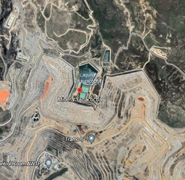Conga Mining Project. Conga goes Against Conga doesn’t go. Third way, “World Gold Park”
DOI:
https://doi.org/10.15381/espiral.v5i10.26713Keywords:
water stress, social conflicts, gold, water, Third non-mining wayAbstract
The Yanacocha Mining intends to extract gold by removing 92,000 tons of earth per day for 17 years, which would result in the destruction of five lagoons (Perol, Azul, Mala, Chailguagón and Chica), 800 wetlands, ruins and other natural resources. The purpose of this study is to question the viability of gold extraction through the destruction of lagoons and springs, especially in a context of increasing global water stress. Instead, it is proposed to explore the possibility of reorienting mining investment towards the tourism sector, which is considered viable given the current circumstances. From a methodological point of view, this research is framed within the basic type of research and uses a qualitative approach aided by the Cartesian method of problem solution, focusing on the dilemma between water availability and gold extraction. The results obtained through this study have shown that the Conga mining project faces tenacious opposition from the local population, who are firmly committed to the protection of their water resources, known as “aguas de Jalca.” In conclusion, it is argued that the viability of the Conga mining project is questionable due to resistance from the local population and growing environmental concerns and global water stress. Therefore, the need to reorient mining investment towards a tourism perspective is suggested, proposing the creation of a World Gold Museum as a more sustainable and environmentally friendly alternative.

Downloads
Published
Issue
Section
License
Copyright (c) 2023 Orestes Diómedes Vargas Barboza

This work is licensed under a Creative Commons Attribution 4.0 International License.
LOS AUTORES RETIENEN SUS DERECHOS:
a. Los autores retienen sus derechos de marca y patente, y también sobre cualquier proceso o procedimiento descrito en el artículo.
b. Los autores retienen el derecho de compartir, copiar, distribuir, ejecutar y comunicar públicamente el artículo publicado en la revista Espiral (por ejemplo, colocarlo en un repositorio institucional o publicarlo en un libro), con un reconocimiento de su publicación inicial en la revista Espiral.
c. Los autores retienen el derecho a hacer una posterior publicación de su trabajo, de utilizar el artículo o cualquier parte de aquel (por ejemplo: una compilación de sus trabajos, notas para conferencias, tesis, o para un libro), siempre que indiquen la fuente de publicación (autores del trabajo, revista, volumen, número y fecha).














